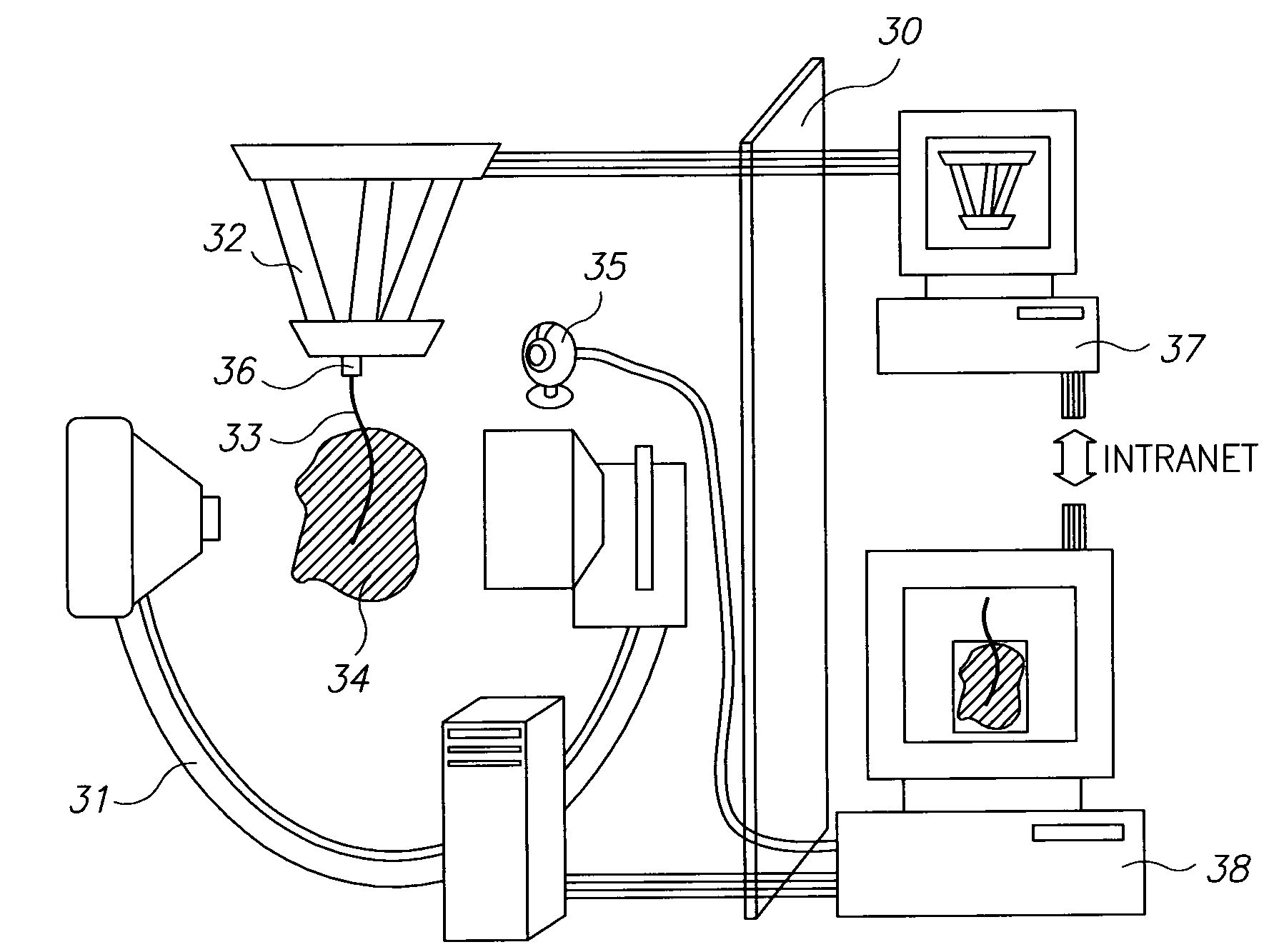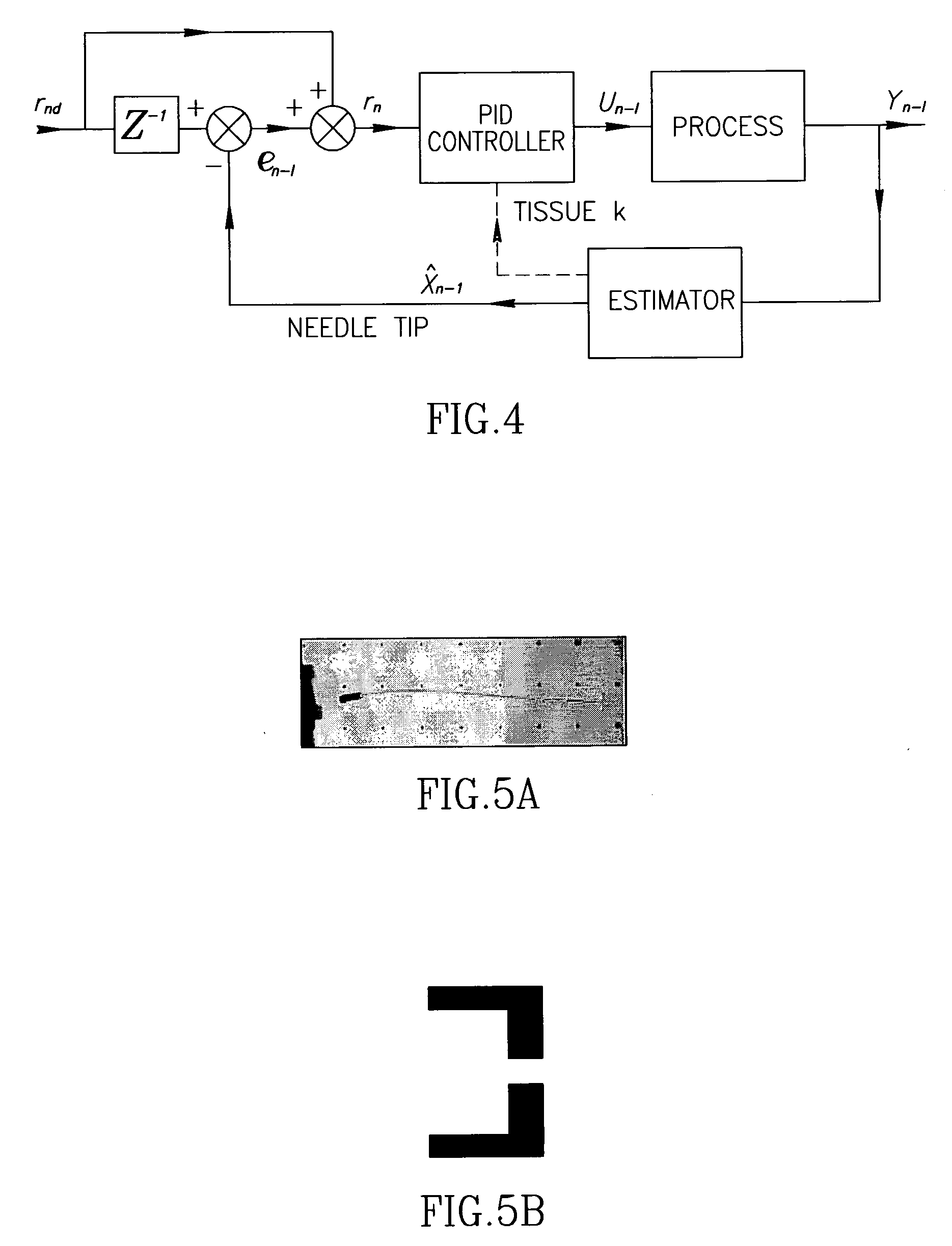Controlled steering of a flexible needle
a flexible needle and controlled steering technology, applied in the direction of sensors, catheters, diagnostics, etc., can solve the problems of poor technique and needle placement, significant limitations of methods, and percutaneous needle insertion
- Summary
- Abstract
- Description
- Claims
- Application Information
AI Technical Summary
Benefits of technology
Problems solved by technology
Method used
Image
Examples
Embodiment Construction
[0060]Reference is now made to FIG. 1, which illustrates schematically a model of the interaction of the tissue with the needle as represented by a series of distributed virtual springs, having coefficients k1, k2, . . . kn as first used in the above-mentioned MICCAI 2003 article by the present inventors. The tissue surface is denoted in FIG. 1 by the dashed line. The modeling of flexible needle movements is based on the assumption of quasistatic motion; the needle is in an equilibrium state at each step. It is known that needle deflection due to interactions with biologic soft tissue is nonlinear with strain. However, it is reasonable to assume a linear lateral force response for small displacements. Thus, the tissue forces on the needle are modeled as a combination of lateral virtual springs distributed along the needle curve plus friction forces Ff tangential to the needle. Since the tissue elastic modulus changes as a function of strain, the coefficients, k, of the virtual sprin...
PUM
 Login to View More
Login to View More Abstract
Description
Claims
Application Information
 Login to View More
Login to View More - R&D
- Intellectual Property
- Life Sciences
- Materials
- Tech Scout
- Unparalleled Data Quality
- Higher Quality Content
- 60% Fewer Hallucinations
Browse by: Latest US Patents, China's latest patents, Technical Efficacy Thesaurus, Application Domain, Technology Topic, Popular Technical Reports.
© 2025 PatSnap. All rights reserved.Legal|Privacy policy|Modern Slavery Act Transparency Statement|Sitemap|About US| Contact US: help@patsnap.com



